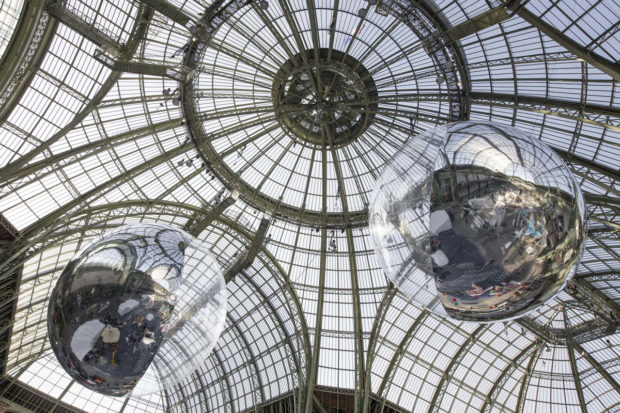
Gravity. Imaging the universe after Einstein at the MAXXI Museum in Rome, running until 24 April, is organised in collaboration with the Italian Space Agency, the National Institute of Nuclear Physics and the Argentinian artist Tomás Saraceno. This exhibition wants to develop an exciting conversation between art and science, creating a participatory space able to convey to a broader audience these professions first-hand, in both a detailed and figurative way. In short, unveil the grey areas of those natural forces regulating and conditioning the whole of human existence.

Art and science, after all, represent two approaches to research, parallel trajectories of unquestionable epistemological value. As Konrad Fiedler noted, they are two mediums «given to man in order to grasp the world»[1]. A dichotomous relationship, therefore, that is made visible and is articulated in the darkness of the museum, where iconic scientific instruments uncover the physical laws hidden inside the artworks which, in turn, visually translate complex scientific theories.

Gravity’s key exhibit commemorates a document published in 1917, which soon became historically significant for our understanding of the universe’s structure and origin. The research study by Albert Einstein, one of the most brilliant scientists and a genius of the twentieth century, applies his theory of general relativity to all the mass present in space, postulating the existence of a cosmological constant[2], a vital factor that balances a static universe that would have otherwise collapsed. Despite being a century old, Einstein’s study continues to be extremely influential and relevant to most recent research on the universe and is still able to fascinate the contemporary art world.

Among these complex works, grand machines, simulations, experiments and immersive installations that explain complex concepts, the engaging film created by the artistic duo Peter Fischli and David Weiss takes centre stage.
Der Lauf der Dinge (1987), part of the section dedicated to space-time, reproduces a chain of events connected by an inevitable and unstoppable cause-effect relation, in which the agent-actor is gravitational force. Artists represent this gravity, according to the model provided by Einstein, as a geometric effect that bends space-time in which all matter is immersed.

[1] K. Fiedler, Aphorisms on Art, Italian translation by R. Rossanda, Tea Arte, Milano 1994, p. 41.
[2] For more information, see J. R. Gott, The Cosmic Web: Mysterious Architecture of the Universe, Bollati Boringhieri Editor, Turin 2016.
«Gravity. Immaginare l’Universo dopo Einstein», curated by Luigia Lonardelli, Vincenzo Napolano, Andrea Zanini (scientific counseling: Giovanni Amelino-Camelia)
MAXXI Museum, Rome, 01.12.2017 – 29.04.2018
images: (cover 1) Tomás Saraceno Aerocene 10.4 & 15.3, 2015. Installation view at Grand Palais, Paris. Courtesy the artist; Tanya Bonakdar Gallery,New York; Andersen’s. Contemporary, Copenhagen; Pinksummer contemporary art, Genoa; Esther Schipper, Berlin. © Photo by Studio Tomás Saraceno, 2015 (2) Curvare lo Spazio, installation, INFN (3) Working on one of the mirrors, detector of gravitational waves Virgo in the laboratory EGO (European Gravitational Observatory) of INFN and of the French CNRS, located in Cascina (Pisa). ©INFN, Photo Simone Schiavon (4) Laurent Grasso – Horn, 2009, installation, 870 x 450 x 510 cm. Courtesy the artist and Galerie Perrotin (5) Antenna Cassini, realised by Thales Alenia Space Italia, is the antenna of the radar SAR and of the experiment Radioscienza. Cassini – Huygens is a program realised by NASA, ESA and ASI in order to study Saturno and its system of satellites and rings with a particular interest for the satellite Titano. The mission, started in October 1997 was concluded in September 2017 ©ESA








































